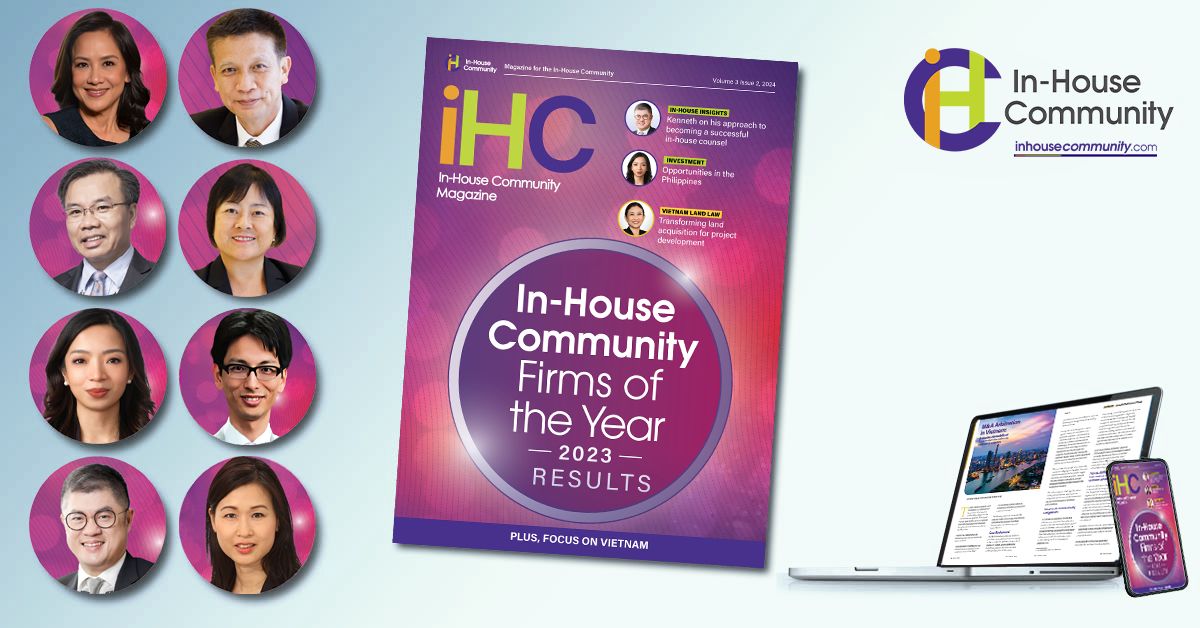 By Meenal Maheshwari Shah, lead transactional counsel, Essar Group
By Meenal Maheshwari Shah, lead transactional counsel, Essar Group
What is virtual currency and cryptocurrency?
A virtual currency (“VC”) is type of digital currency which is a representation of value, issued by private developers and denominated in their own unit of account.[1] The concept of VC covers a wider array of “currencies,” ranging from simple IOUs of issuers (such as internet or mobile coupons and airline miles) to VCs backed by assets such as gold, and “cryptocurrencies” such as Bitcoin[2], Ethereum, Monreo etc. Certain VCs are convertible into fiat currency while the others are not and as such the latter’s use for payment for good and services is limited. VC schemes can work on a centralised, decentralised or hybrid model. Cryptocurrency is a form of VC which is based on blockchain technology[3]. Accordingly it has the same characteristics as any product of blockchain. The data of crypto asset transactions is maintained under a cryptographical seal in a digital ledger of a blockchain, such data is distributed to everyone in the network simultaneously and is thereby unalterable. Also, the cryptocurrency transactions are decentralised (ie no central body regulates it). It is worthwhile to mention that the primary factors that lie behind the rise of cryptocurrencies are, (i) the development of blockchain technology; (ii) people’s mistrust on the central bodies that regulate conventional monies; (iii) privacy concerns around transactions; and (iv) uncertainty on the role of government (political bias and corruption).[4]
What is the international acceptance of VC?
VCs pose unique challenges to regulators around the world. Firstly, while the crypto assets have the potential to improve the efficiency and inclusiveness of the financial system and economy broadly but they raise issues with respect to consumer and investor protection, market integrity, tax evasion, money laundering and terrorist financing.[5] Secondly, the regulators face definitional and monitoring challenges. Finding a consistent definition/ classification for VCs even in the same jurisdiction is difficult. For eg. U.S. tax authority, the Internal Revenue Service, has classified VCs as “property” for the purpose of federal taxation[6] whereas the US Treasury Department’s Financial Crime Enforcement Network has classified VCs as “value” for the purpose of anti — money laundering/ terrorist financing (“ML/CFT”) obligations.[7] As for regulating, some regulators have come up with policies to address the risks such as ML, CFT, organised crimes etc., posed by VCs[8], while the others have totally banned them[9]. Some countries treat VCs as commodities[10] while the others consider them akin to fiat money.[11] Different nations are also taking different approaches on VC taxation. Cryptocurrencies could also present challenges for central banks when they try to affect control over the money supply and therefore the conduct of monetary policy.[12]
What is India’s position on VCs?
The central bank of India, Reserve Bank of India (“RBI”), while exercising its powers under the Banking Regulation Act, 1949 (“BRA”), Reserve Bank of India Act, 1934 (“RBIA”) and the Payment and Settlement Systems Act, 2007 (“PSSA”) issued a circular dated April 6, 2018 (“RBI Circular”) directing the entities regulated by it not to deal in VCs or provide services for facilitating any person in dealing with or settling VCs and to exit the relationship with such persons or entities if they are already providing services to them. This RBI Circular was challenged in the Supreme Court of India (“SC”) by the Internet and Mobile Association of India (“IMA”), the specialised industry body which represents the online and digital service industry, and the shareholders/ promoters of VC exchanges by two writs[13]. The deconstruction of the primary issues and the decision of the Apex Court[14] is set out below:
- Issue: Whether or not RBI has the power to prohibit or regulate the activity of trading VCs?
To decide this issue, as first step, the SC took up the task of understanding the power RBI by exhaustively reading the RBIA, BRA and PSSA. The SC came to the conclusion that cumulatively the aforesaid statutes recognise and confer inter-alia the following wide powers on the RBI (i) to operate the currency and credit system of the country to its advantage, (ii) to take over the management of the currency from central government, (iii) to regulate the financial system of the country to its advantage, and (iv) to regulate and supervise the payment systems.
Secondly, the SC took up the task of deciding whether VC is money or good/ tradable commodity. The court analyzed the treatment of VCs by different governments and money market regulators of the world and understood that barring a few, most do not recognise VCs as legal tender but they do recognise that VCs are capable of performing the functions of real currency. It further analyzed the judgments of various courts in different jurisdictions and understood that they have identified VCs to belong to different categories ranging from property to commodity to non-traditional currency payment instrument to money to funds depending upon the text of the statute involved in the case and context. Analyzing the Queen’s Bench[15] judgment that laid down the four functions of money, ie, (i) a medium of exchange, (ii) a unit of account, (iii) a store of value, and (iv) a final discharge of debt and standard of deferred payment, the SC took the view that the concept of money has evolved a lot ever since the judgment and that even though VCs do not qualify as money due to the lack of them meeting the last function of ‘money’, RBI’s power on VCs can be triggered even if VCs have not acquired the legal status. It also examined the definition of “currency”[16] in Foreign Exchange Management Act, 1999. The definition includes within its fold instruments like promissory notes, cheques, bills of exchange etc. which are not exactly currencies but merely operate as valid discharge of (or creation of) debt between parties, the SC was of the view that VCs could also form part of the definition as nothing prevents the RBI from notifying VCs under the category of ‘other similar instruments’ in the definition of currency. The SC therefore rejected the contention that VCs are just goods/ commodities and can never be regarded as real money.
Combining its two-step findings, the SC decided that the powers of RBI would compel them to naturally address all the issues that are perceived as potential risks to the monetary, currency, payment, credit and financial systems of the country including VCs (given the characteristics of VCs). Therefore, RBI has the power to prohibit and/ or regulate the activity of trading VCs. It is extremely important to mention that the SC took note of the fact that the RBI Circular does not impose a prohibition on the use of or the trading of VCs and that it merely directs banking companies not to provide banking services to those engaged in the trading or facilitating the trading of VCs.
- Issue: If RBI has the power to regulate/ prohibit trading of VCs, did it exercise the power properly as per law?
Non-application of mind, malice in law and colorable exercise of power by RBI: The SC took the view that given that RBI has taken a series of steps for over a period of last five years to tackle the issues surrounding VCs, including issuing warnings and explaining all considerations that they thought relevant to come up with the RBI Circular, it cannot be said that there was ‘no application of mind’ by the RBI. Therefore, it cannot be said that RBI ‘failed to take into account the relevant considerations’. The SC also rejected the contention that the impugned RBI Circular is vitiated by malice in law and a colorable exercise of power by RBI. It reasoned that a mere collateral damage to the VC exchanges, which do not come within the purview of the RBI cannot be assailed as ‘malice in law/ colorable exercise of power by RBI’ as RBI exercised its power in good faith to achieve its objectives and to prevent the gullible public from having an illusion that VCs have a legal tender status or are backed by a central authority.
RBI’s decisions do not qualify for Judicial Deference: The SC rejected the contention that RBI’s decisions cannot invite judicial due deference because RBI is not just any other statutory authority and the power conferred upon RBI to take over the management of the currency from the central government cannot be taken away.
Disproportionate/ unreasonable restriction under Article 19(1)(g) of the Constitution: It was contended that the right to access the banking system is integral to the right to carry on any trade or business, guaranteed by Article 19(1)(g) of the Constitution (“Article 19(1)(g)”) and therefore the denial of such access to the petitioners by the RBI Circular is not a reasonable restriction and is extremely disproportionate. The SC denied the claims of the hobbyists (as they don’t do it as a profession) and the traders in VCs (as they can still trade crypto to crypto privately or using currencies through digital wallets) under Article 19(1)(g) but agreed that the shareholders and the promoters of the VC exchanges have a claim as the RBI Circular has almost wiped the VC exchanges from the industrial map of the country. For the RBI Circular to pass muster of reasonability under Article 19(1)(g), the RBI has to establish the necessity for the RBI Circular, that it considered less intrusive alternatives and that the public interest warrants such serious restitution bordering on prohibition. While the SC found that RBI did consider alternatives, though at a later stage, it failed to show the necessity of the RBI Circular. The object of the RBI Circular truly is to hit the trading of VC to ensure consumer protection, prevention of violation of ML laws, curbing the menace of CFT and safeguarding the existing monetary/ payment/ credit system from being polluted but as hitting the target directly is not within the domain of RBI directly, the RBI Circular sought to only protect regulated entities by ring-fencing them. This resulted in the VC exchanges completely shut shop without RBI having demonstrated that VC exchanges have an adverse impact on the activities of the banking companies despite the fact that the Government of India has until now failed to take a call on the law banning VCs. Accordingly, the SC struck the RBI Circular down on the ground of disproportionality.
With the aforesaid decision of SC, the VC exchanges once again have access to the banking system and therefore investors are freely engaging in VC trading through VC exchanges. However, there is no clarity in India on the aspect of cross border VC trading.
What does the future hold for VCs in India?
The future may see either of the two bills dealing in cryptocurrencies (said to be advocating exactly opposite positions) currently pending in the Indian legislature, ie the Crypto Token and Crypto Asset (Banning, Control and Regulation) Bill, 2018 and the Banning of Cryptocurrency and Regulation of Official Digital Currency Bill, 2019 becoming the law or maybe a completely new law being formulated. There is also a possibility that RBI may look at another way to tackle VC trading. While the future is unknown it important for the regulator to have a flexible approach given the rapidly evolving nature of the VCs. It maybe worth considering to have a specialised body continuously monitor the emerging benefits and risks of VCs. Currently VCs have a very small share of the market so a better approach for India is to regulate the VC intermediaries rather than banning the innovation outrightly. At a later stage based, on the data collected over a period of time if it is found that the use of VCs is spreading and that they pose a threat to the financial stability of India, more prohibitory steps maybe taken.
[1] Virtual Currencies and Beyond: Initial Considerations, IMF Staff Discussion Note, published on 20/01/2016 (https://www.imf.org/en/Publications/Staff-Discussion-Notes/Issues/2016/12/31/Virtual-Currencies-and-Beyond-Initial-Considerations-43618)
[2] Ibid.
[3] Blockchain technology is an evolving record of all transactions that is maintained simultaneously and in common by every computer in the network of the blockchain. These records are distributed to all and belong to no one. Once the transaction is affirmed it is in the ledger forever and is unalterable and inerasable. A very interesting decentralized supply-chain start-up that can easily explain the concept of block-chain is Treum, a ConsenSys backed system. An example would be that the start-up can deploy blockchain to trace the fish from “bait to plate” and hence will help a fish supply business to build trust with their customer being able to verify, through the RFID code, where all the fish has been right from when the fish was caught. You can visit https://treum.io/ for more information.
[4] Based on the Report by IMF dated 22/01/2019 titled ‘Cryptocurrencies and Monetary Policies’ by Jeffery Franks.
[5] Communique issued by G-20 after the meeting on 19-20/03/2018.
[6] https://www.irs.gov/pub/irs-drop/n-14-21.pdf
[7] https://www.fincen.gov/sites/default/files/2019-05/FinCEN%20Guidance%20CVC%20FINAL%20508.pdf
[8] Such as France, Germany, Australia, Canada, New Zealand (https://www.loc.gov/law/help/cryptocurrency/world-survey.php)
[9] Such as Algeria, Bolivia, Morocco, Nepal, Pakistan, China and Vietnam (https://www.loc.gov/law/help/cryptocurrency/world-survey.php)
[10] Canada, Mexico, South America
[11] Japan, Germany, Liechenstien, Luxembourg, certain states of USA
[12] What are cryptocurrencies? By Antonie Bouveret and Vikram Haskar published in the Future of Currency in a Digital World, June 2018, IMF F&D Magazine, page 26 (https://www.imf.org/external/pubs/ft/fandd/2018/06/pdf/fd0618.pdf)
[13] Writ Petition (Civil) No. 528 of 2018 and Writ Petition (Civil) No. 373 of 2018
[14] Pronounced on 4/03/2020 by a 3 judge bench of Justice Fali Nariman, Aniruddha Bose and V. Ramasubramanian (https://main.sci.gov.in/supremecourt/2018/19230/19230_2018_4_1501_21151_Judgement_04-Mar-2020.pdf)
[15] Moss v Hankcock, (1899) 2 QB 111
[16] Section 2(h) of FEMA defines currency to mean “all currency notes, postal notes, postal orders, money orders, cheques, drafts, travelers’ cheque, letters of credit, bills of exchange and promissory notes, credit cards or such other similar instruments as may be notified by the Reserve Bank.”















